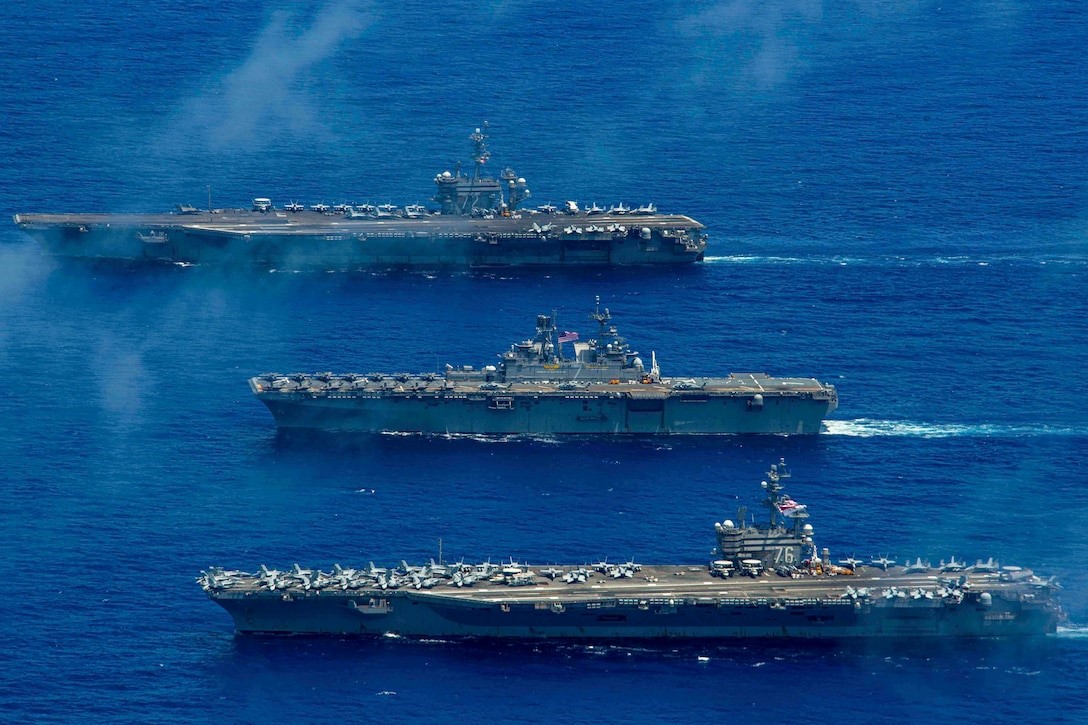Surprisingly, given the massive challenge from Beijing, President Biden’s 2023 budget proposal called for decommissioning 24 ships next year — and all of the Navy’s 22 cruisers by 2027
Representative Rob Wittman (R-VA), Ranking Member of the Subcommittee on Sea Power and Projection Forces, is sounding the alarm on America’s increasingly outnumbered Navy.
In a statement to Congress, he warned that “Great Power Competition is already here and we’re currently not setup to prevail. With President Biden’s inept withdrawal from Afghanistan, Putin’s invasion of Ukraine and Xi’s continued Chinese expansion both in terms of military size and political will, we have arrived at a new period of international instability. Our desire to maintain strategic advantage and tactical overmatch is being challenged. A change in our national security strategy is solely needed that prioritizes warfighting IN the near term.:
In addition to budgetary issues, Rep. Wittman objected to the Department of Defense’s priorities, noting that priorities such as tackling COVID, building diversity and elevating climate change as a “national priority”, appear to outweigh defending the nation.
He believes this emphasis is based on an unsubstantiated belief that there is no significant danger of significant naval conflict this decade.
Wittman states that “The lack of urgency in national security planning is particularly disheartening. Last year, the Navy requested only one destroyer, no amphibs and proposed to retire 7 large surface combatants whose firepower exceeded that of the entire British Navy. The Navy provided a “30 year shipbuilding plan” that was only good for one year. The Navy submitted a shipyard recapitalization plan with little financial backing. And the Navy continues to underman our surface Navy who currently is lacking over 5,000 sailors…this lack of national security planning unsettles our allies and unnerves the industrial base that craves real leadership. Our Navy needs to wake up and change their calculus to support our new strategic reality.”
The danger continues to grow. Even as the U.S. Navy hovers at about 290 vessels with little prospects for growth, China’s 355 ship maritime force is schedule to grow to 460 ships by 2030. Those aren’t small craft. Beijing is fielding new, modern aircraft carrier battle groups.
Wittman’s concern is matched by that of Rep. Mike Rogers (R-AL.) In a National Review article, Rogers notes that “It is in America’s interest to prevent China from taking Taiwan by force or coercion. If Taiwan fell, U.S. allies and territories in the region would face a greatly increased threat from Beijing. China would also gain control of about half of the global semiconductor industry, including the world’s largest chip-maker, TSMC, which would be a massive blow to the global economy and cybersecurity efforts.”
How, then, can the U.S. prevent Taiwan from falling? We must invest in hard-power capabilities to deter the CCP. Our military must expand forward deployments to the region and continue its freedom-of-navigation operations in the South China Sea. To that end, it is critical that the U.S. Navy gets the funding and tools it needs to deter China — and the latest Biden budget fails on both of those priorities.
Recently, the Senate has propsed tacking on $45 billion to the Pentagon budget, essentially to address the effects of inflation. That amount will not be adequate, however, to address the growing numerical inequality the Navy faces with China.
The unconcern is not just about ships. The Department of Defense warns that The Chinese are activity seeking a military naval base in Africa on the Atlantic coast, which would threaten U.S. national security, according to U.S. Army Gen. Stephen J. Townsend, commander of U.S. Africa Command. Beijing is also working towards building a naval basing agreement with Cambodia, and has increasingly gained influence in the Caribbean.
Photo: The USS Ronald Reagan, USS Tripoli and USS Abraham Lincoln steam in formation in the Philippine Sea, June 12, 2022, during Valiant Shield, a field training exercise.
